Expert’s Rating
Pros
- Now has a bigger display
- Good battery for a Wear OS smartwatch
- Overall slick smartwatch experience
Cons
- ECG not available in UK at launch
- Design is similar to the Watch 2
- It’s more expensive than the Watch 2
Our Verdict
The OnePlus Watch 3 is one of the best Wear OS smartwatches you can buy that offers more battery improvements along with some new health smarts. You’re just going to have to pay more for it than its predecessor.
Price When Reviewed
This value will show the geolocated pricing text for product undefined
Best Pricing Today
The OnePlus Watch 3 has a tough act to follow after the Watch 2 showed that OnePlus was serious about making a good Wear OS smartwatch to rival the Google Pixel Watch 3 and the Samsung Galaxy Watch 7.
We got a smartwatch that has helped to redefine expectations of what battery life should and can be on a Google-based smartwatch, all while delivering that Wear software in a mostly pleasing fashion.
For the OnePlus Watch 3, it’s about bringing the smartwatch more in line with Apple, Samsung and Google, adding serious health monitoring features as it pushes that battery life a bit further. That’s exactly what it’s achieved, making the latest OnePlus Watch 3 an even more accomplished smartwatch.
Design & Build
- Silver or a black titanium bezel
- New redesigned watch crown
- Adds ECG electrodes to physical button
The design language and approach in general to the look of the OnePlus Watch 3 is very similar to the Watch 2.
There are two looks to pick from, with both the obsidian titanium and emerald titanium Watch 3 matching up stainless steel cases with trim titanium bezels. You’ve still got that flatter edge on the right side of the case to break up a full circular case design, and it now hosts a rotating crown that sits more prominently on the watch.
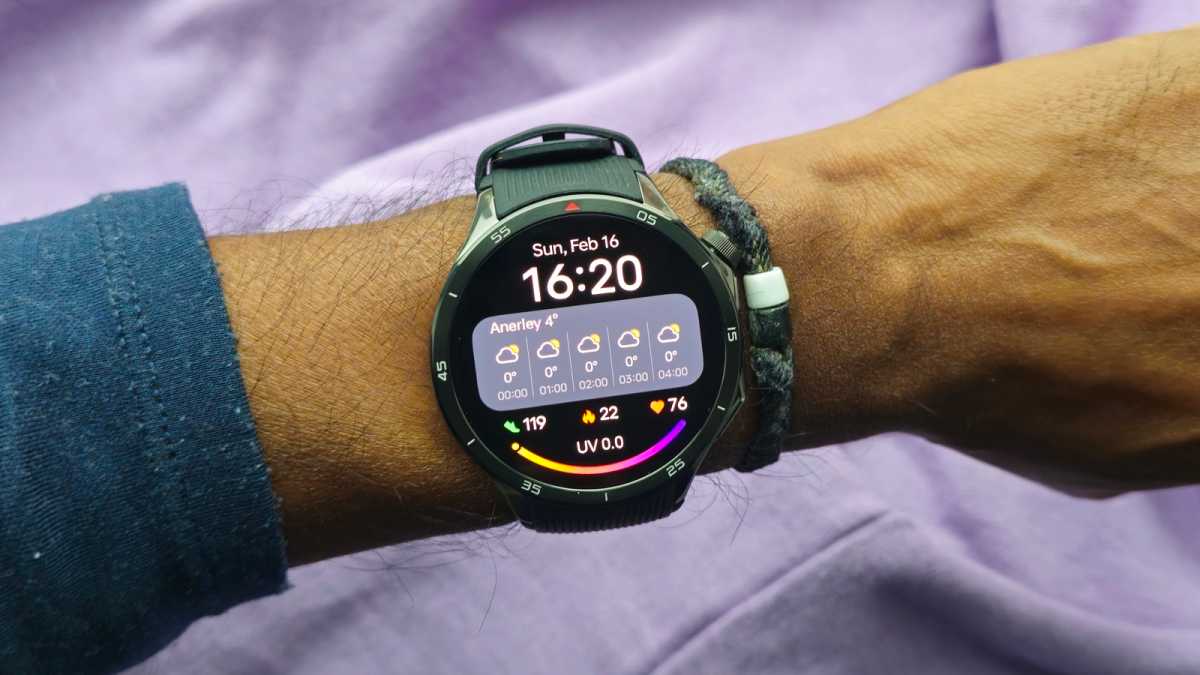
Mike Sawh
The case size is roughly the same as its predecessor, so if you liked the stature of its predecessor, you’ll also like this. Some may still lament that there still isn’t a smaller case option to go for, but I found it a good fit for my skinny wrist. That case is matched up with a pretty standard sporty 22mm strap that’s easy to remove and replace, while additional straps are priced at £34.99 (US pricing TBC).
The Watch 3 is undoubtedly well made, but it still lacks a bit of wow factor for me
While it doesn’t scream rugged, OnePlus assures you can go for adventures with the Watch 2. It’s been tested to military standards for toughness, while the added IP68 and 5ATM (waterproof up to 50 metres depth) ratings mean you can easily take it for a swim as well.
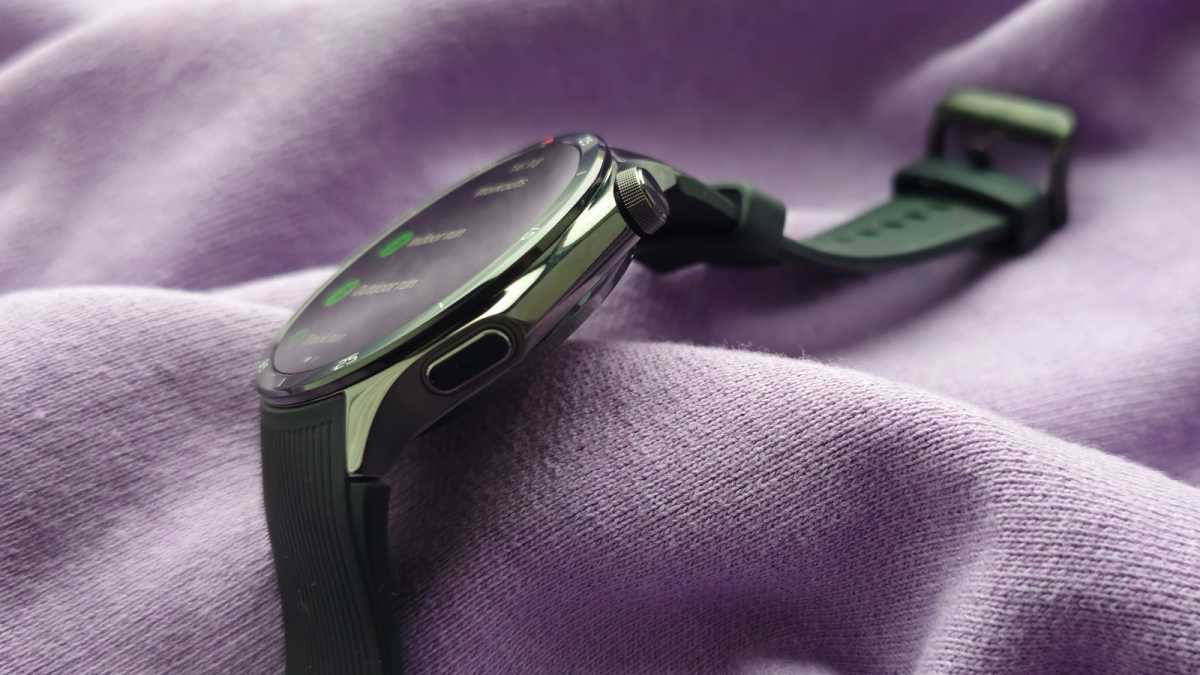
Mike Sawh
On the caseback, there’s a pretty similar-looking sensor setup that has been reworked to unlock the ability to monitor temperature, heart rate and blood oxygen levels. The electrodes needed to unlock its new ECG powers are built into the bottom physical button.
If you were hoping for something radically different from the Watch 2, that’s not the case here. The Nordic Blue edition of the OnePlus Watch 2 feels like the direction OnePlus needed to take its next watch in, but that hasn’t materialised.
The Watch 3 is undoubtedly well made, but it still lacks a bit of wow factor for me.
Screen & Audio
- Larger AMOLED display
- Offers Bluetooth calling
- No LTE version
OnePlus is going bigger with the screen on the Watch 3.
It’s moving from a 1.43-inch display to a 1.50-inch LTPO AMOLED screen that sticks to the same 466 x 466 resolution and now spreads that across the larger screen estate. The display is covered in Sapphire crystal to give it some of the best scratch protection you’ll find on a smartwatch and keeping a 2.5D display gives the screen a nice sheen to it when you view it from all angles.

Mike Sawh
While the screen has grown, the general feel of wearing it doesn’t feel drastically different, which is partly down to OnePlus keeping to a similar-sized case. You’re still getting a sharp, colourful and vibrant AMOLED screen that, with a peak brightness of 2,200 nits, is a huge step up from the 600 nits offered on its predecessor.
While the screen has grown, the general feel of wearing it doesn’t feel drastically different
OnePlus includes a speaker and microphone once again, which enables Bluetooth calling, but still no LTE connectivity on offer. It would’ve been nice to have the option to have a more untethered experience, but I do wonder if this is a sacrifice made to make sure that battery life remains strong.
Software & Features
- Runs on Wear OS 5.0
- Adds video watch faces
- NFC for contactless payments
OnePlus continues its approach of using two chipsets on the Watch 3. It also continues to make it a device that only works with Android phones, just like other Wear OS smartwatches.
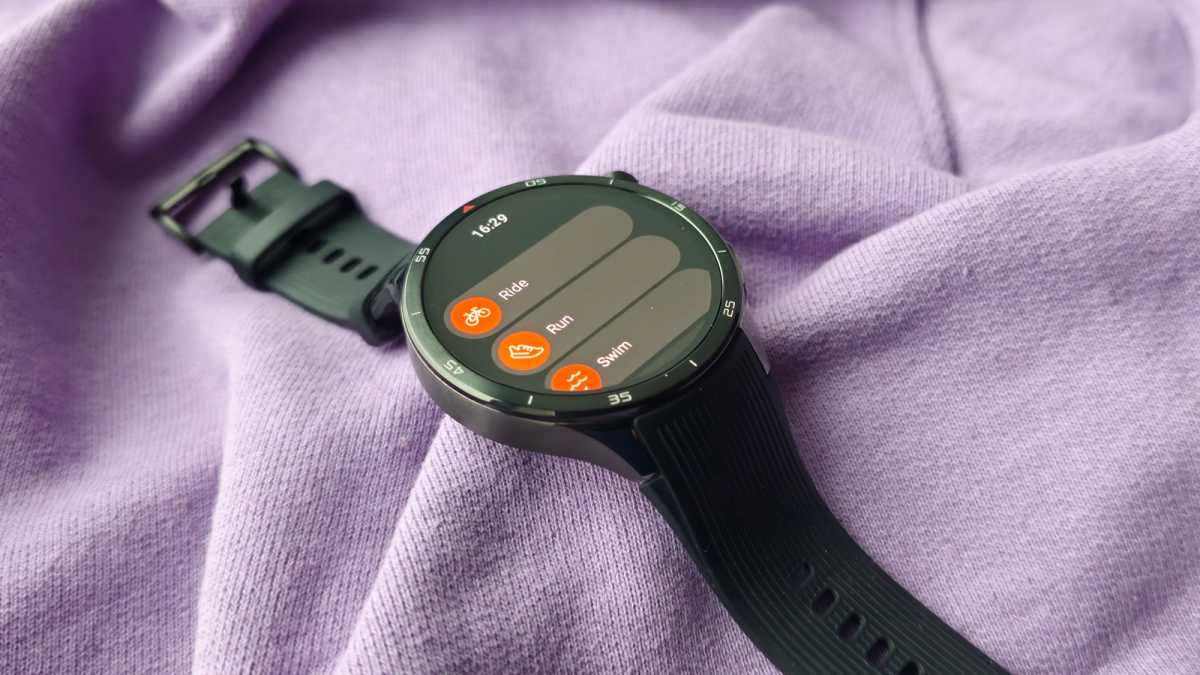
Mike Sawh
Qualcomm’s Snapdragon W5 processor remains, but it’s now matched to a new BES2800BP processor, moving on from the BES2700 chip used on the Watch 2 and Watch 2R.
Using a combination of processors means turning to one for more demanding smartwatch features like running apps and then bringing the other processor into play for less power-intensive features like displaying notifications. That’s backed up by 2GB of RAM and 32GB of storage to help keep things running smoothly.
Crucially, that’s now all powering Google’s Wear OS 5.0, giving the Watch 3 the latest available version of Google’s smartwatch operating system. That Wear OS upgrade brings performance and power optimisation improvements and there are also some more tangible improvements, mainly focused on Google’s own apps.
If you’re using Google Maps, you can sync navigation and location data from your phone. You can also view boarding passes and tickets for events through Google Wallet on the watch. It really feels like an update that sees Google play catchup with Apple and makes OnePlus’ already-slick approach to Wear an even richer one.
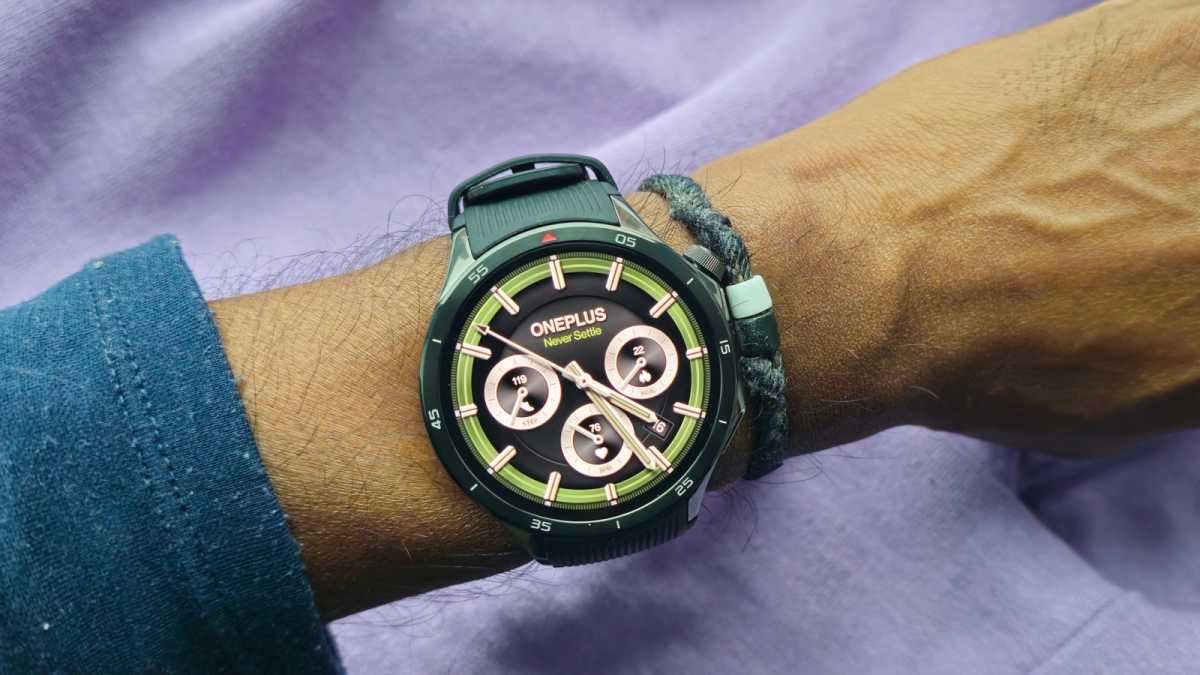
Mike Sawh
Features like notifications are well optimised to that larger display including pulling through images. The watch faces can be data-rich or more minimalist, while you do now also have the option to apply video watch faces, with a good mix of faces in general on offer.
Getting apps from the Play Store is straightforward, while the ability to quickly alter the view of the app tray was a nice touch. OnePlus has added a controller feature for letting you play videos on YouTube or TikTok or snap a picture, but it’s only available to OnePlus phone owners.
Fitness & Tracking
- Improved dual-frequency GPS support
- New ECG analyser
- Adds temperature sensor
The OnePlus Watch 3’s health and fitness tracking is centred on improving features from the Watch 2 and adding new ones that make it act more like a complete health monitor.
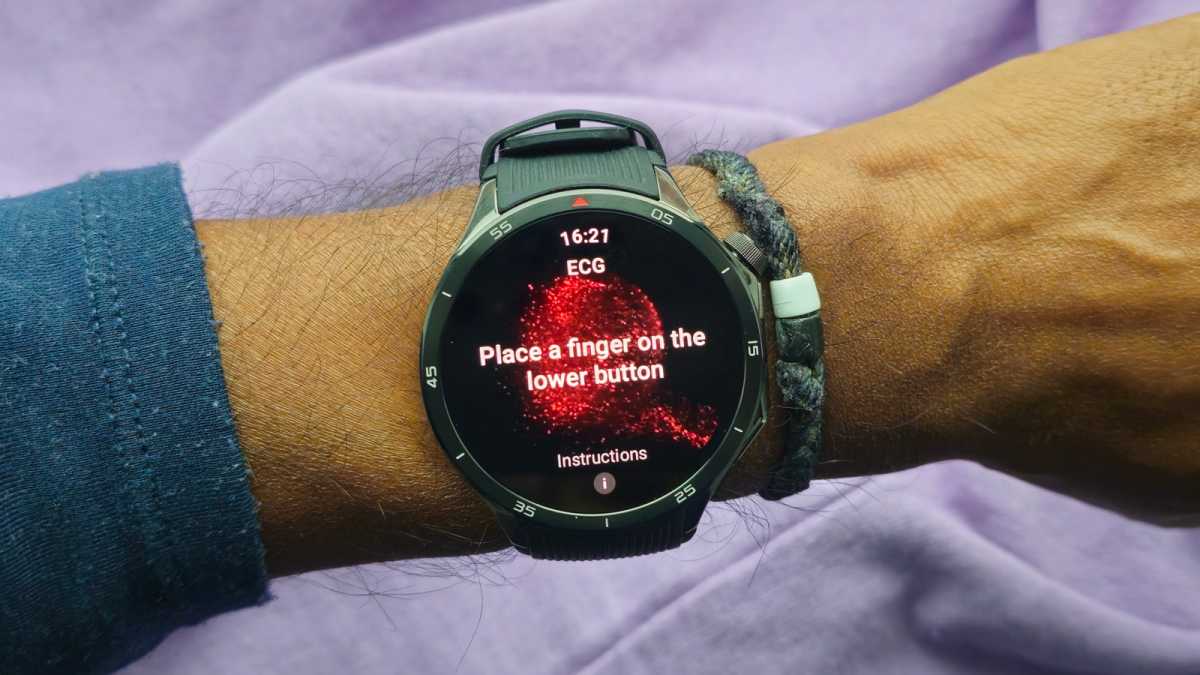
Mike Sawh
The headline addition is the ECG analyzer, which lets you take a 30-second measurement when holding your finger down on the bottom physical button to take an ECG heart rate reading.
In that measurement, OnePlus says it can detect conditions like atrial fibrillation, sinus rhythm, when heart rate has spiked or dropped and if there are any extreme heart rate fluctuations. As with ECG features on other smartwatches, the availability of that feature will vary by region, as OnePlus needs to receive the appropriate regulatory clearance to check for the heart health conditions mentioned.
I was able to get access to the feature during testing, which doesn’t officially launch in the UK until later in 2025 (US availability TBC).
Setting it up reminds me of using the ECG sensor on Samsung smartwatches. You’ll need to activate it first from the OHealth phone app and have a SIM inside of your phone to check that you’re in a country where the ECG feature is supported and can be turned on. I compared a bunch of measurements to ones on the Apple Watch and it did present similar data and handles presenting that data on the watch in a very similar fashion to the Samsung Galaxy Watch.
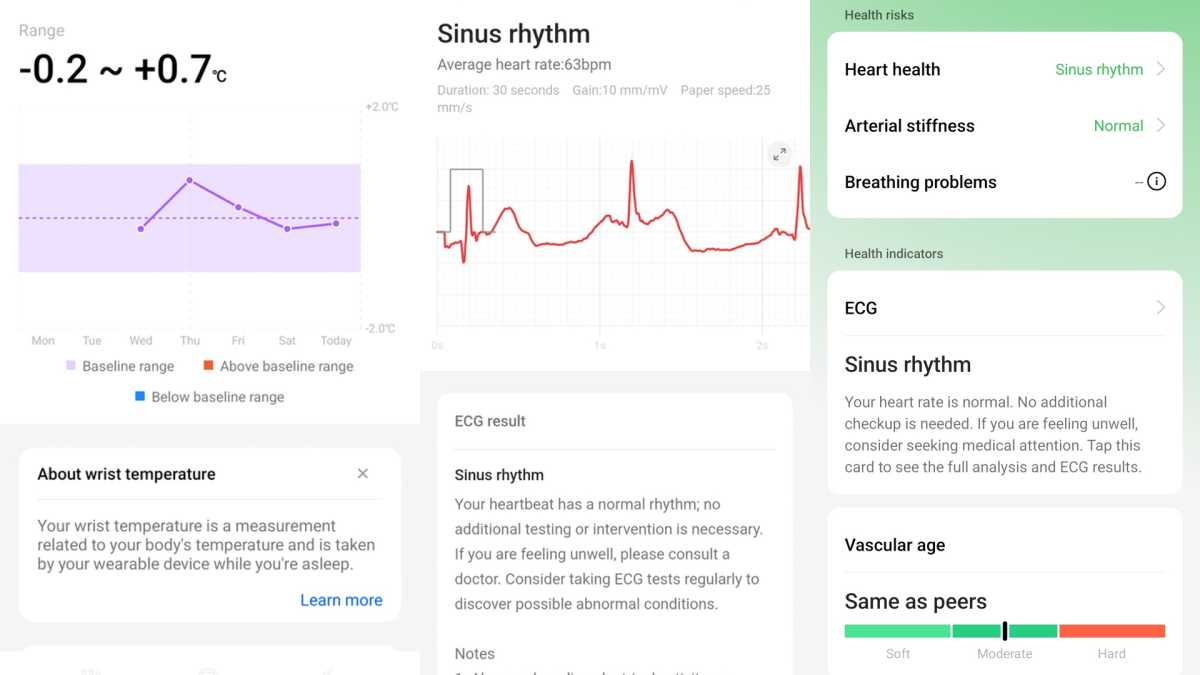
Mike Sawh
Beyond the ECG addition, you can also check your vascular health, which uses both the ECG and PPG sensors to check and perform a 60-second check-in to see a summary of metrics like heart rate, stress and blood oxygen levels all on one screen. This isn’t new to smartwatches and simply means OnePlus can offer some of those richer health features for those who want it.
On the fitness and sports tracking front, it’s all about improvements. You’re getting the promise of a better version of the dual-frequency GPS included on the Watch 2 that’s built with a new GPS chip and antenna design. The changes don’t seem to have massively paid off, though, as it tended to overreport distance and misjudge pacing despite the tracked routes looking pretty similar to a Garmin watch with similar dual-band technology.
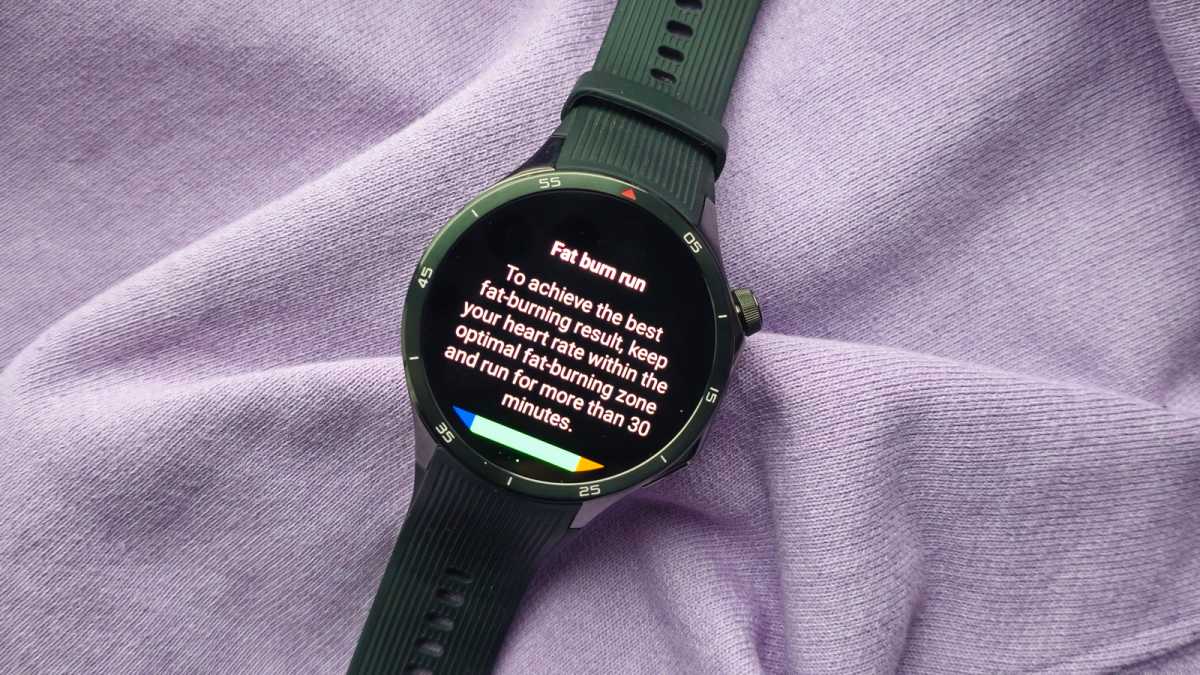
Mike Sawh
In typical smartwatch fashion, there’s a bucketload of sports profiles on offer, plus automatic workout recognition for running, walking, rowing (indoor), elliptical, cycling and swimming. If you’re big into your tennis, that’s now included as one of the professional sports modes, allowing it can track specifics in your game.
I’ve used it for indoor and outdoor runs, indoor rows, swims and general workouts and the tracking performance on the whole has generally been fine. However, it’s simply not going to give you the level of sports tracking you’ll get from a similarly priced sports watch.
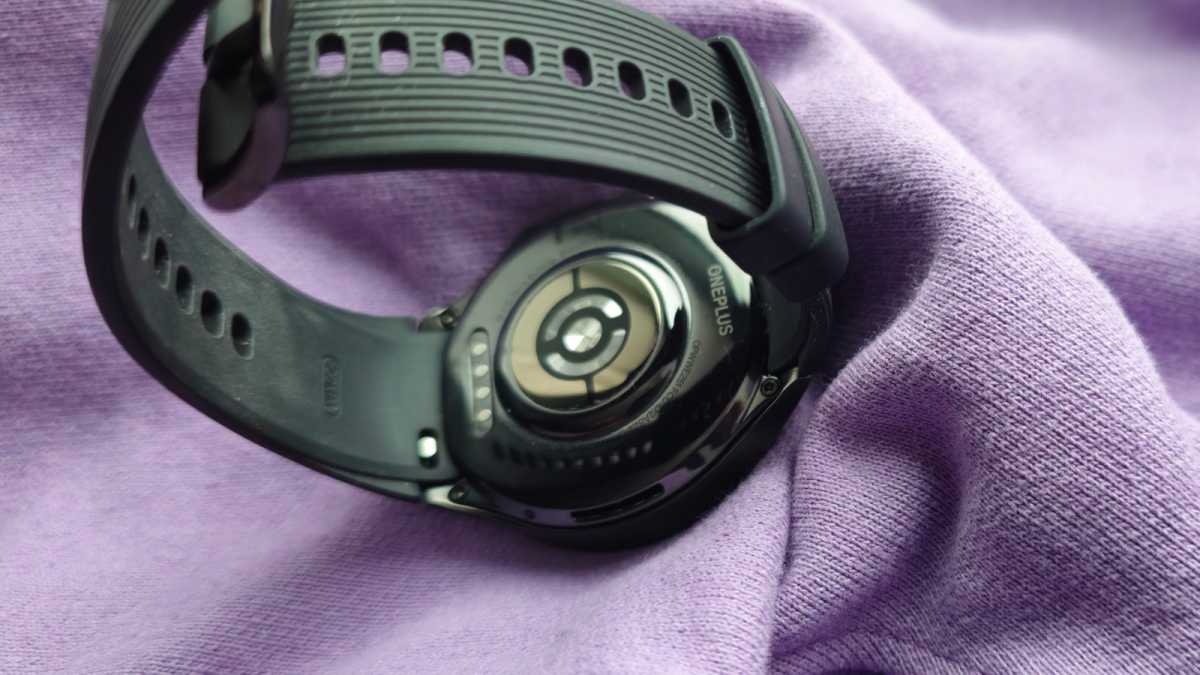
Mike Sawh
The PPG sensor responsible for tracking heart rate day and night and during exercise includes new glass and LED material that, along with a curvier strap, OnePlus says should give heart rate tracking a boost.
In testing, for exercise, it handled more relaxed workouts fine but struggled a lot more at high intensity. For an interval track workout, the average and maximum heart rates were well below what they should’ve been for the intensity of the session and when compared to a heart rate monitor.
For exercise, it handled more relaxed workouts fine but struggled a lot more at high intensity
I wasn’t massively convinced over daily heart rate tracking either, where resting heart rate was generally in the ballpark of other devices yet still seemed to record wildly higher spikes in heart rate during the day.
There are also promised improvements with sleep tracking, so I’ve been wearing the Oura Ring 4 and Samsung Galaxy Ring along with a Garmin watch to measure up monitoring that slumber time.
The Watch 3 typically produced similar sleep duration data and suggested near identical times it had taken me to fall asleep and wake up in the morning. Sleep scores and sleep heart rate looked good and there’s plenty of that sleep data available to view on the watch if you want to dig deeper into it.
Battery Life & Charging
- Up to 5 days of battery life
- Up to 3 days in heavy usage mode
- 16 days in battery saver mode
OnePlus made big strides with the battery on the OnePlus Watch 2 and it’s aiming to do so again with the Watch 3.
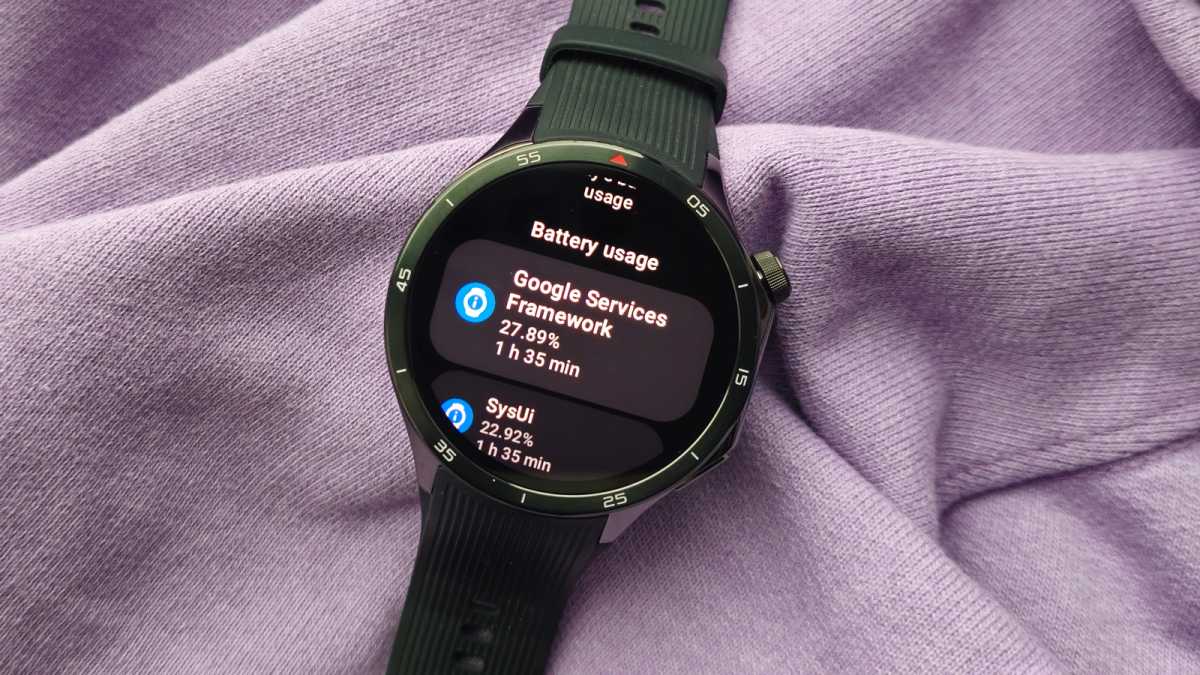
Mike Sawh
It’s upped the capacity of the battery from 500mAh to 613mAh, which can supposedly deliver up to 5 days of battery (120 hours) in what OnePlus calls its ‘smart’ mode. That’s one day more than the Watch 2.
If you’re using it in ‘heavy’ mode, that drops to 3 days, though again it’s up a day on the Watch 2. It uses its dual-chip setup to push things further and when you get low, there’s VOOC fast charging to give you a day’s watch time from a 10-minute charge.
I found the battery life strong on the Watch 3, and a significant step up compared to the Watch 2.
In general, I found the battery life strong on the Watch 3, and a significant step up compared to the Watch 2.
My time veered more on the heavy usage, using a mix of the raise to wake and keeping the screen set to always-on mode. I managed to get four days but it definitely has the capacity to get to 5 days. Even when I had to switch to the battery saver mode, which jumps from 12 days to 16 days, it isn’t as restrictive as mode as you’d expect, I was still able to get through a day and that included tracking a workout. Even an hour’s use of the GPS saw battery drop 4-5%, which isn’t too bad going.
It’s the kind of battery that does a good job of really clinging on to the end until it’s finally time to drop it on the same-look proprietary charging cradle used on the Watch 2.
Price & Availability
The OnePlus Watch 3 was announced and launched on 18 February 2025 with a £319 launch price. It’s available in the UK from the OnePlus website, though US pricing and availability are yet to be confirmed.
So, that’s a jump in price on the OnePlus Watch 2, which launched at £299 and has since dropped to £239.
If you compare that to other leading Wear OS smartwatches, it’s slightly cheaper than the Google Pixel Watch 3 (£349/$349), but pricier than the Samsung Galaxy Watch 7 (£289/$299). It’s not quite as cheap as the Mobvoi TicWatch Pro 5 though – it started at £329.99/$349.99 but is now available for much less.
Should you buy the OnePlus Watch 3?
The OnePlus Watch 3 remains one of the most likeable Wear OS smartwatches. It does enough in the looks department while offering strong software and battery performance to make it a good all-round package.
If you’ve been holding out for a OnePlus Watch with serious health features like ECG, then it’s disappointing those features won’t be ready at launch. Especially as you can grab it on the Pixel Watch 3 for a bit more money or less on the Samsung Galaxy Watch 7.
Putting the price up makes it a tougher sell over the Galaxy Watch 7 if you’re yearning for those extra health features. It does give you a more refined look and better battery life than Samsung’s smartwatch, though. The Pixel Watch 3 takes things up a notch, but can’t match the Watch 3’s battery life.
The OnePlus Watch 3 is a good showcase for Google’s Wear OS software, but it’s not the standout option in the category that OnePlus might’ve been hoping for.
Specs:
- Wear OS 5.0
- Snapdragon W5 + BES2800
- 2GB RAM and 32GB ROM
- 1.5-inch LTPO AMOLED
- ECG sensor
- NFC with Google Wallet
- Waterproof up to 50 metres
- Built-in dual-frequency GPS
- PPG heart rate sensor
- Works with Android only




